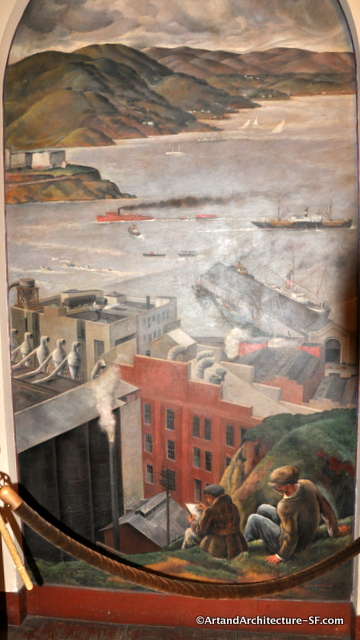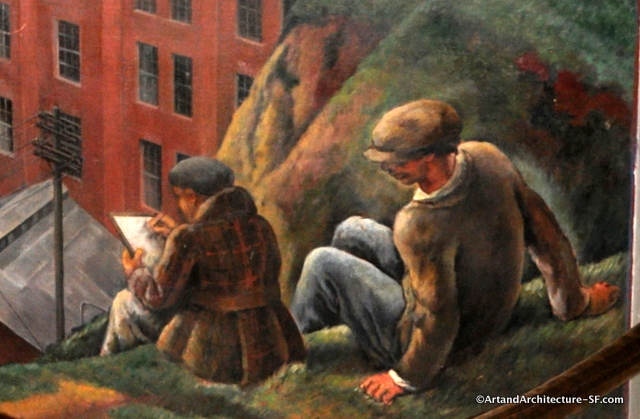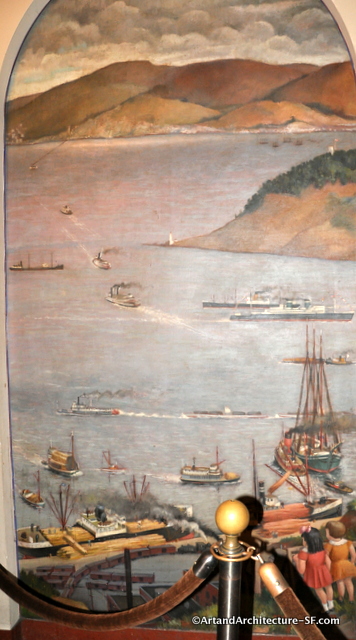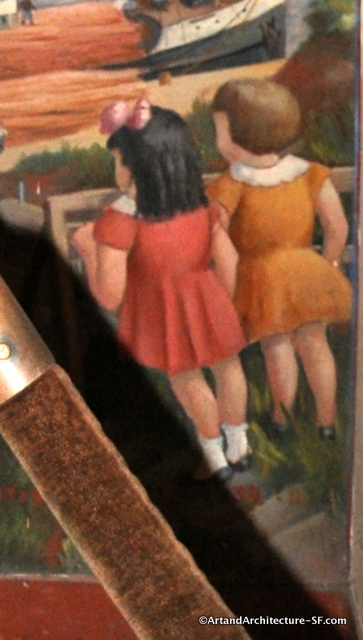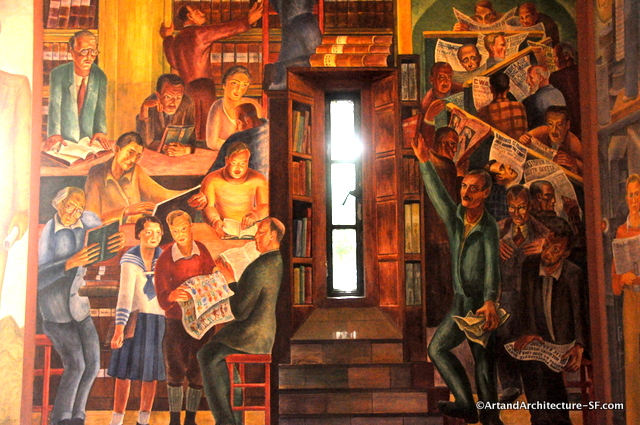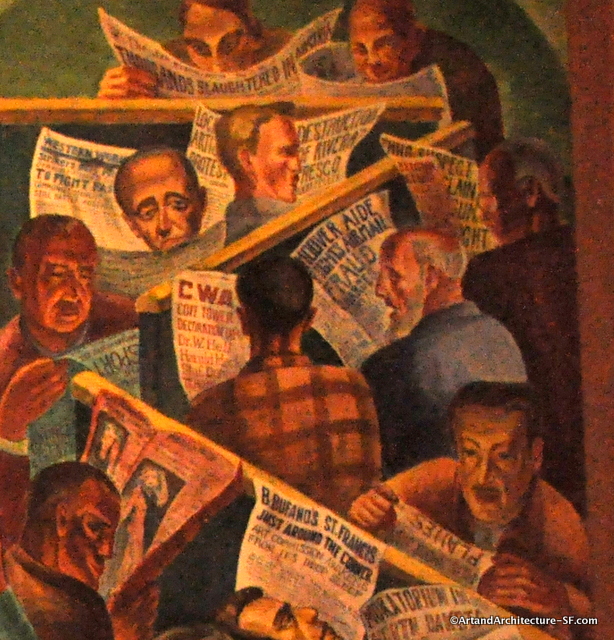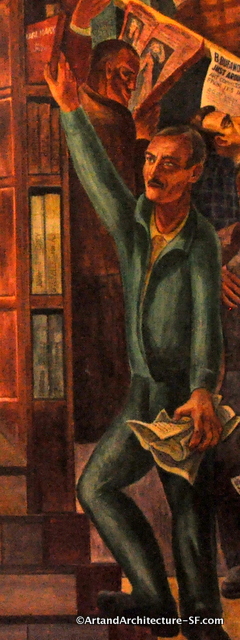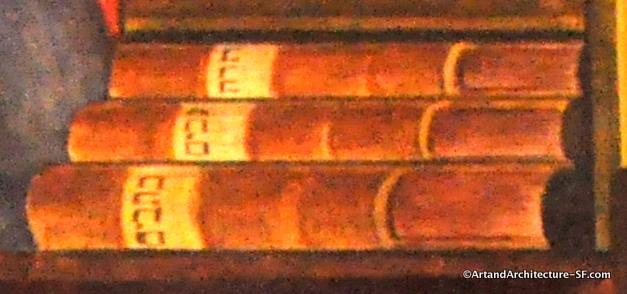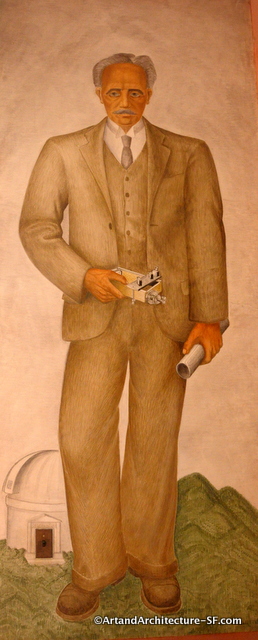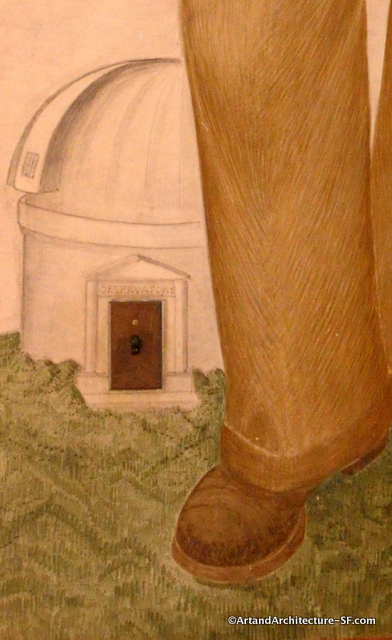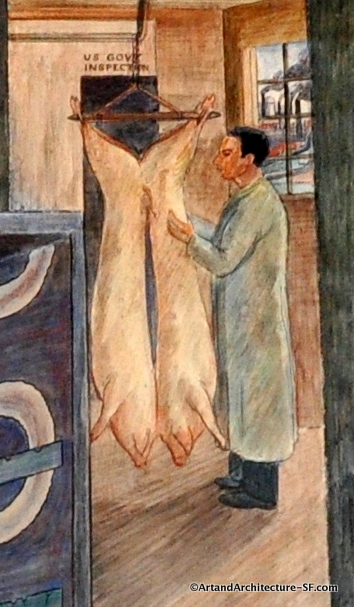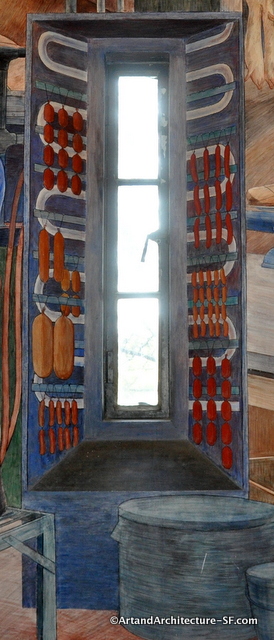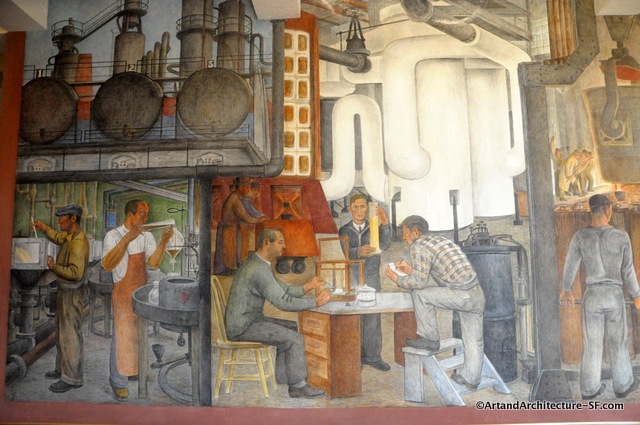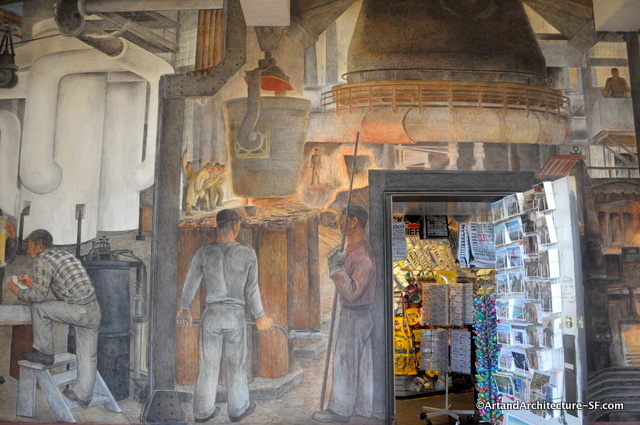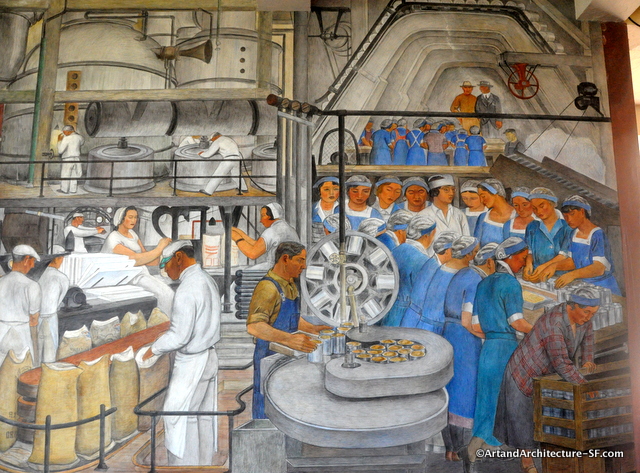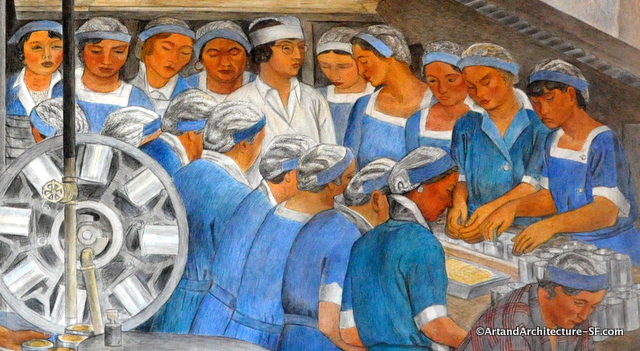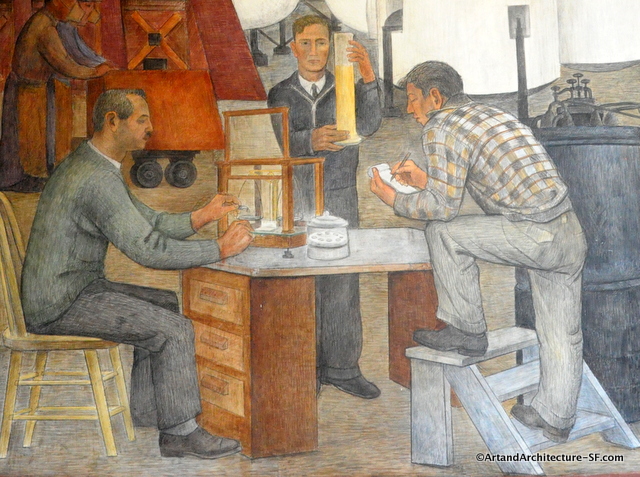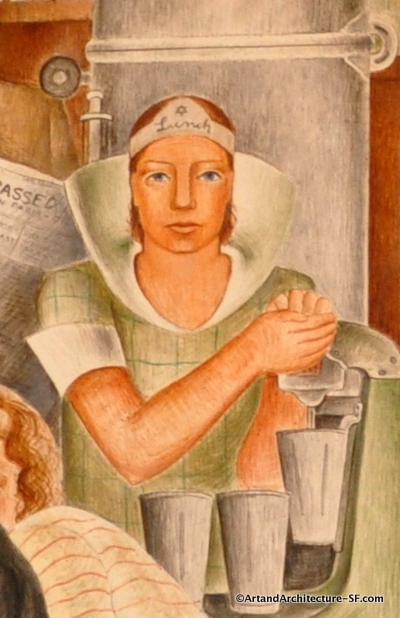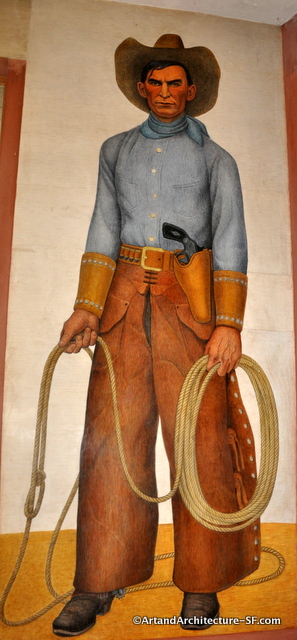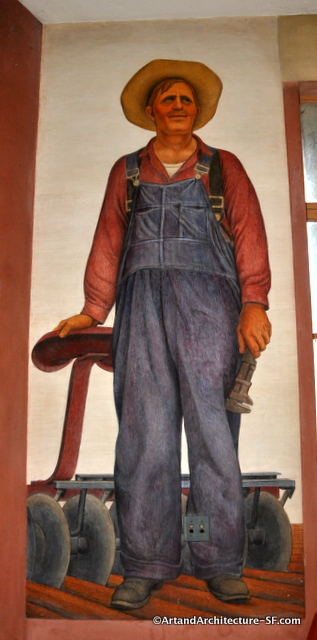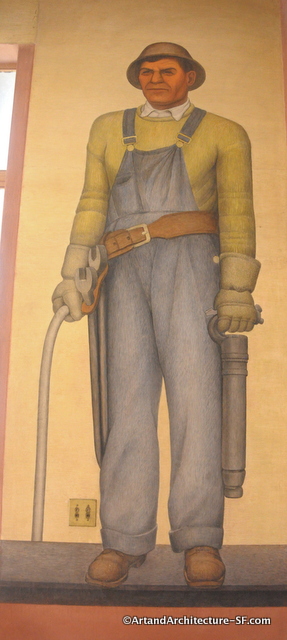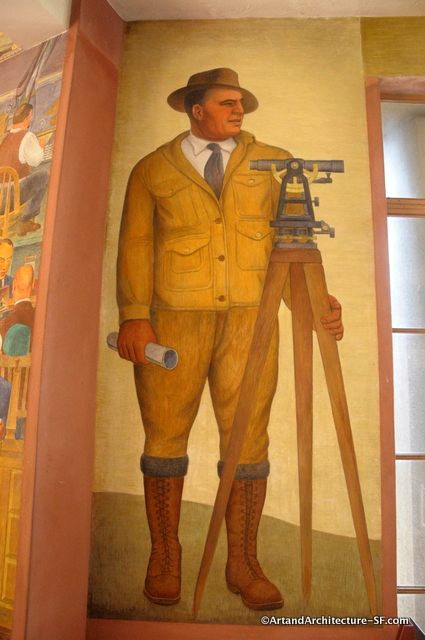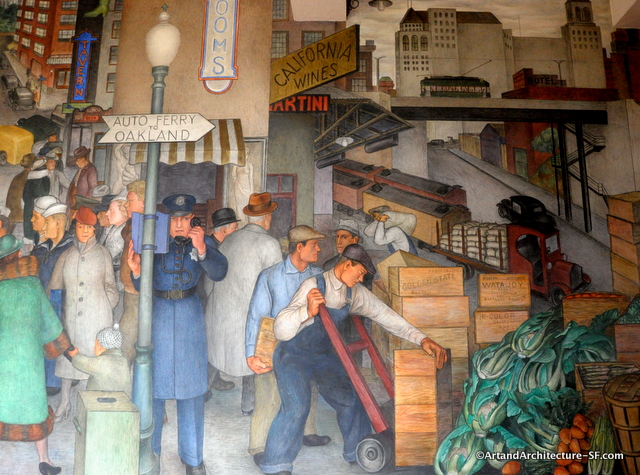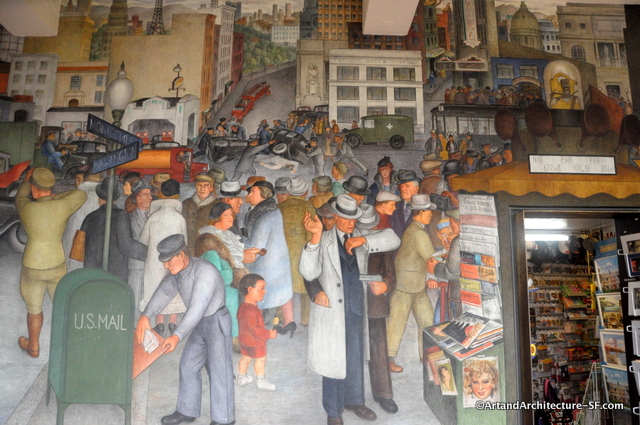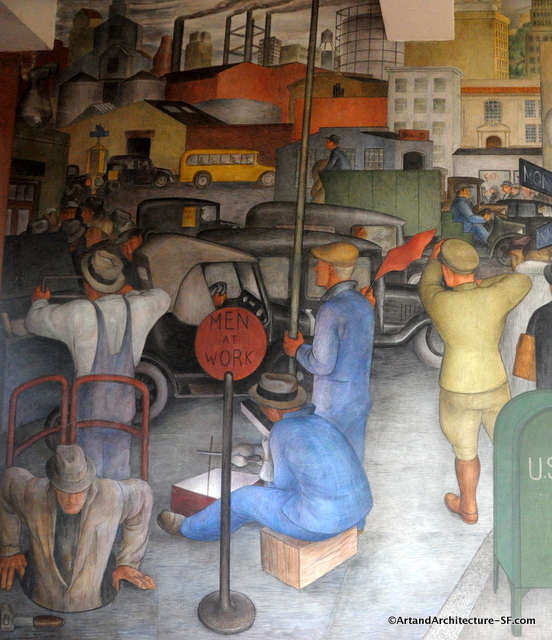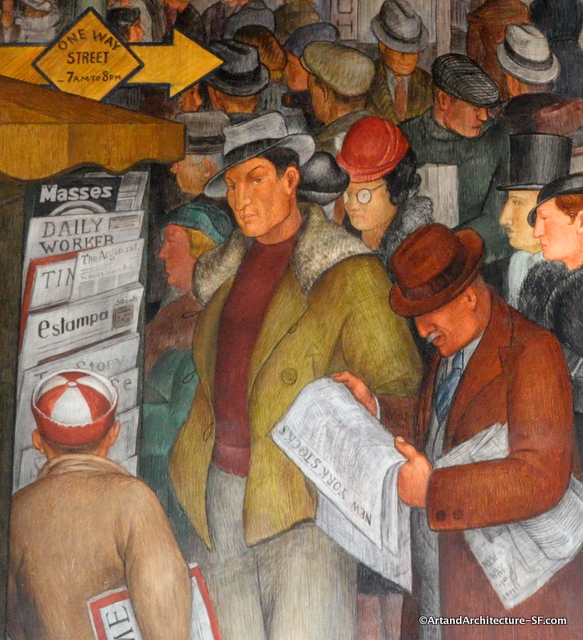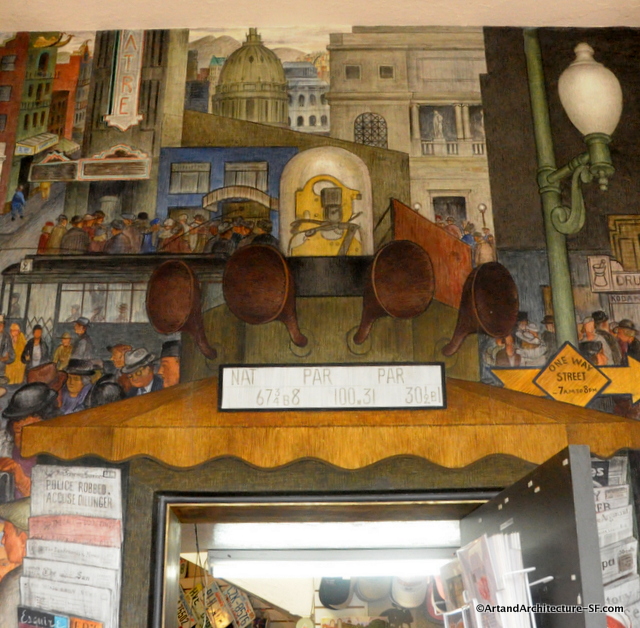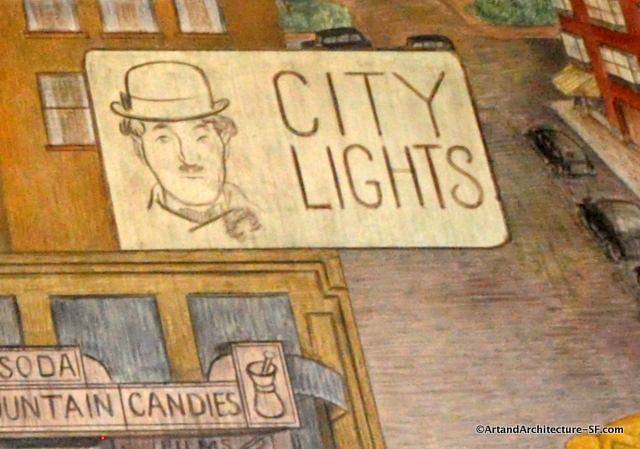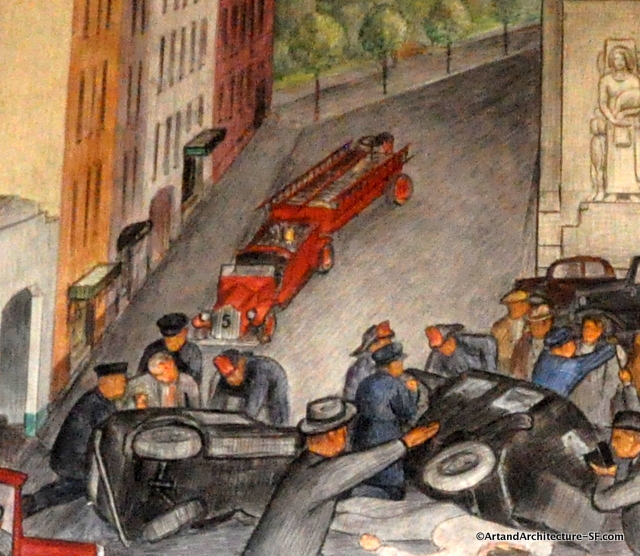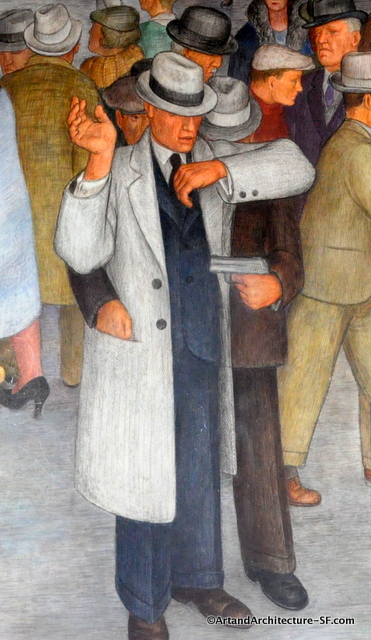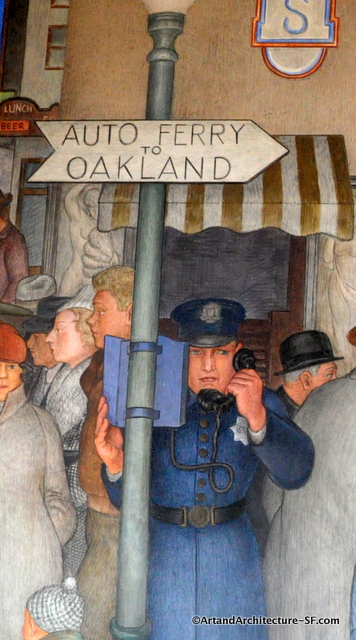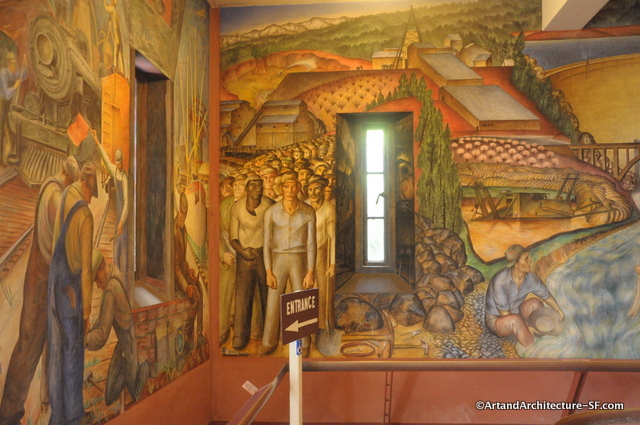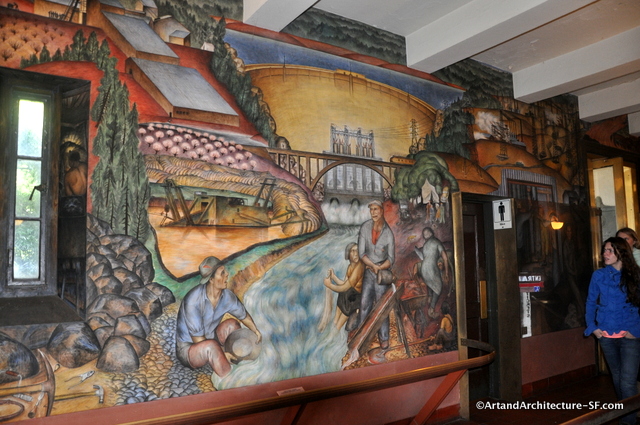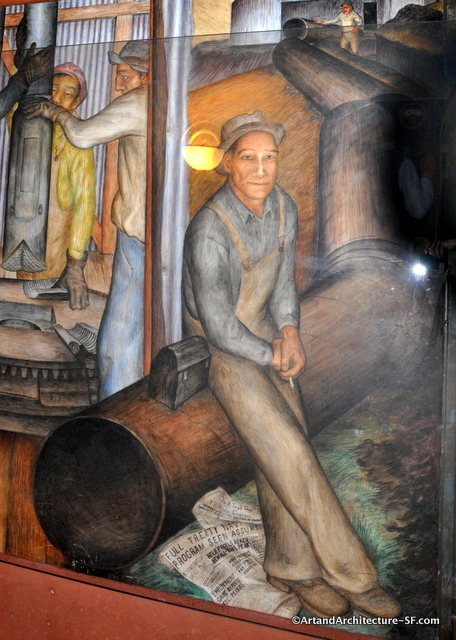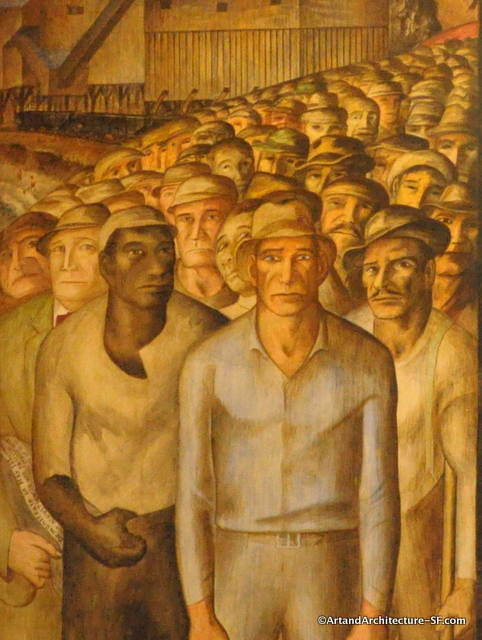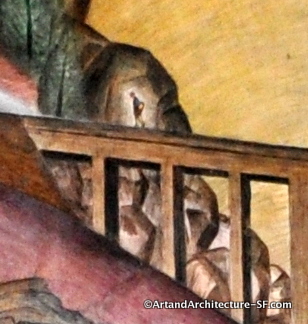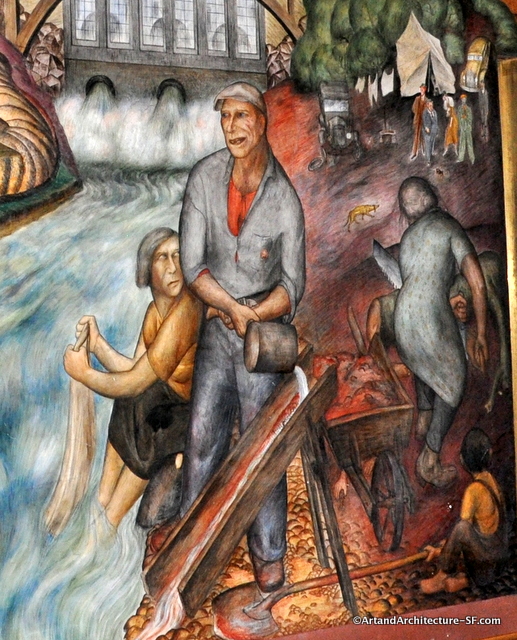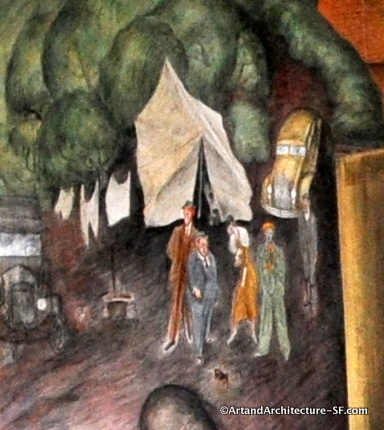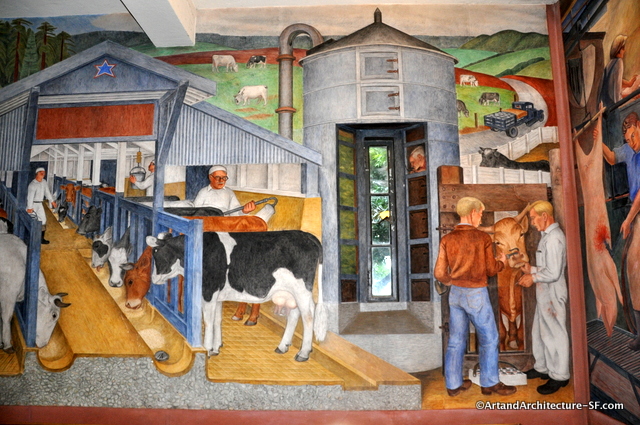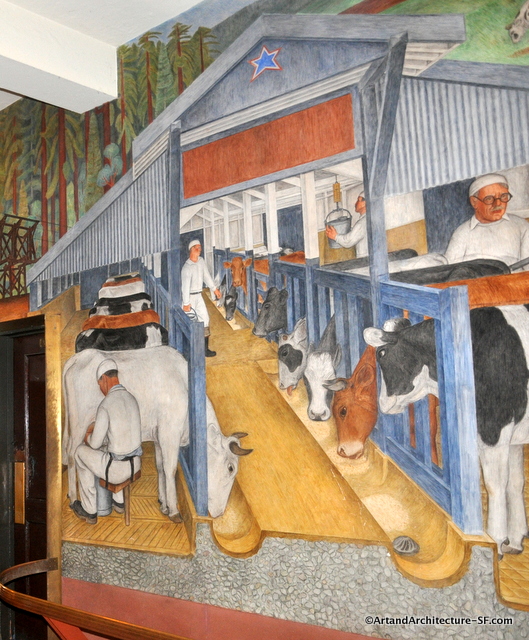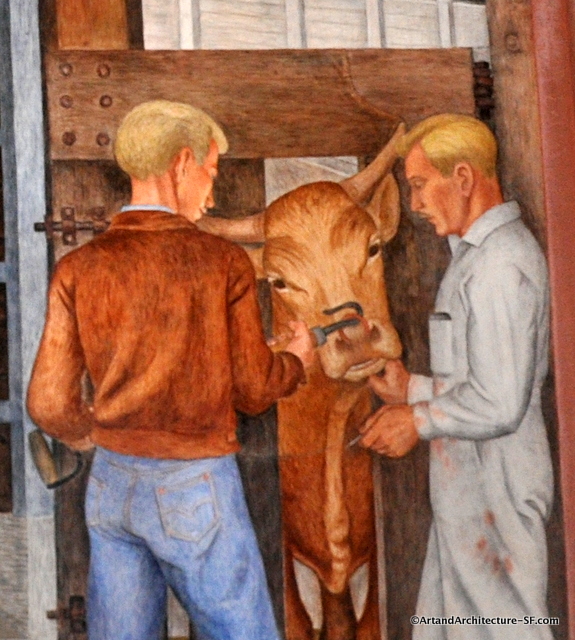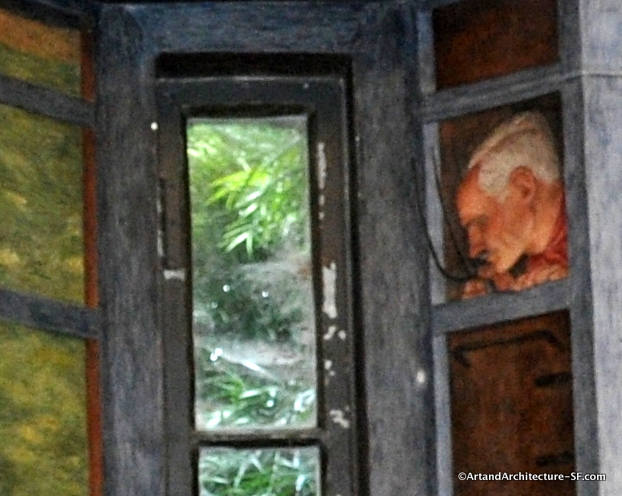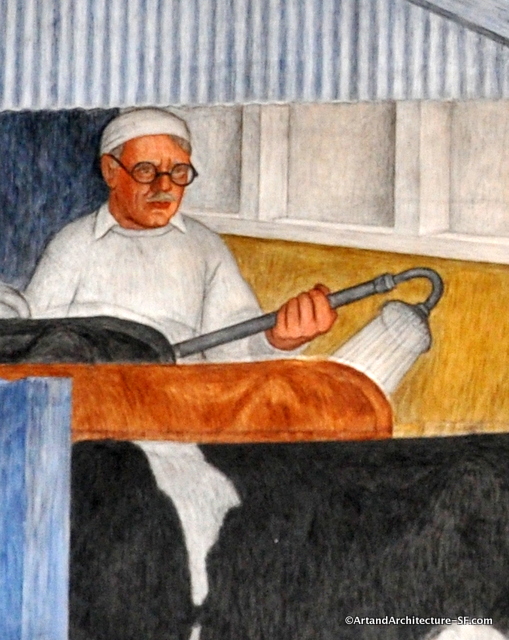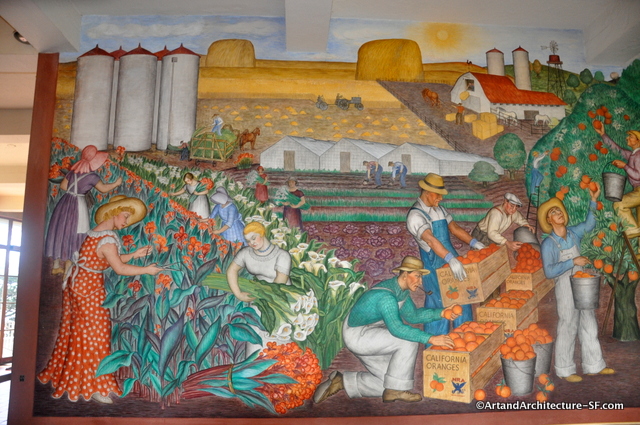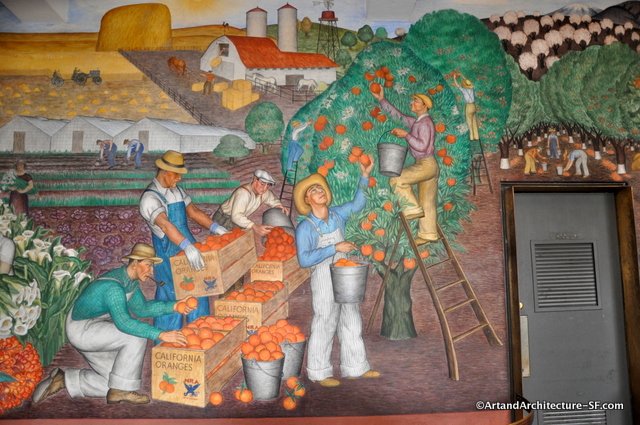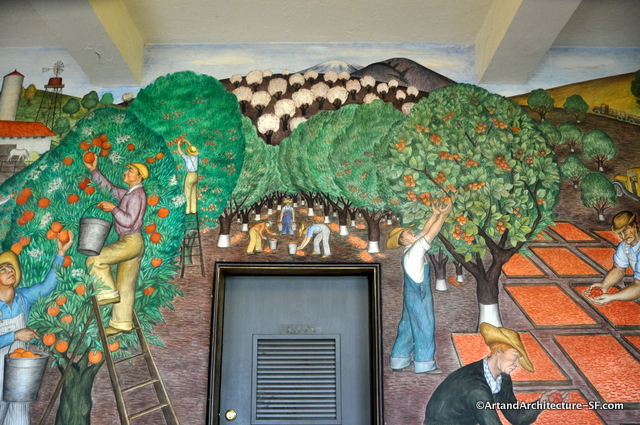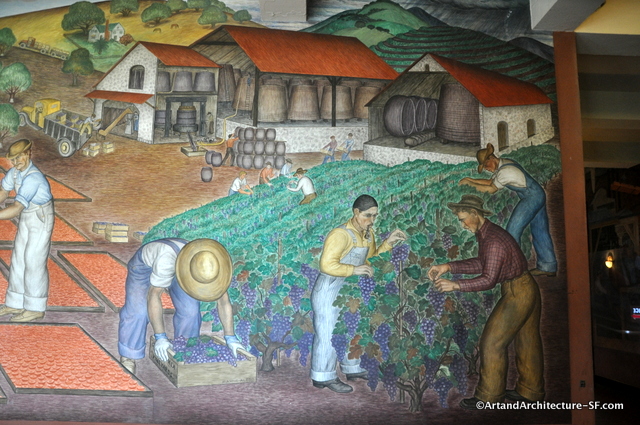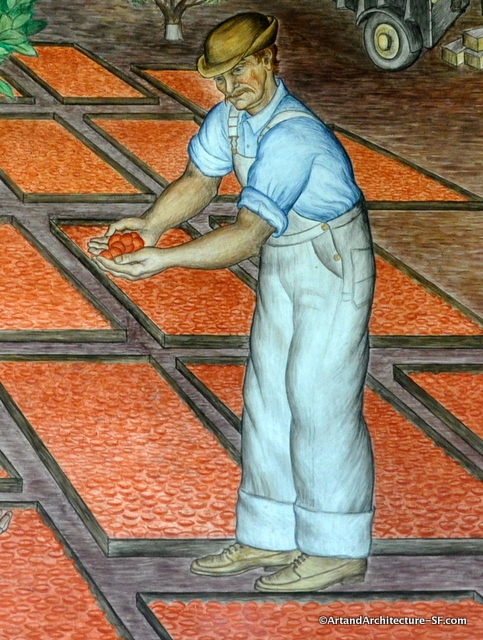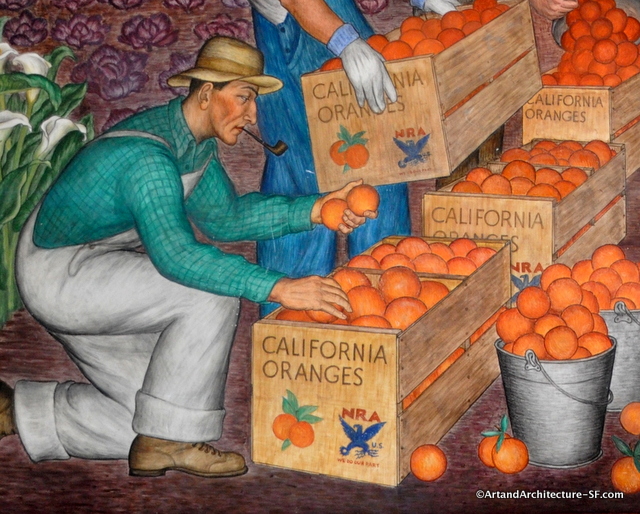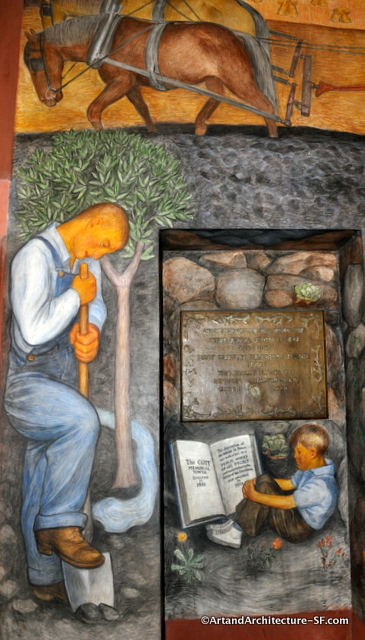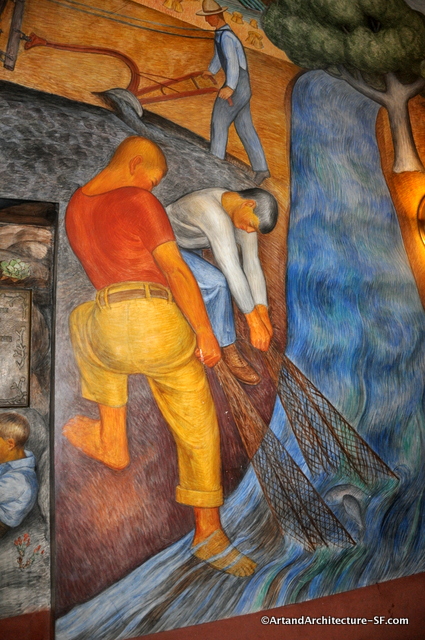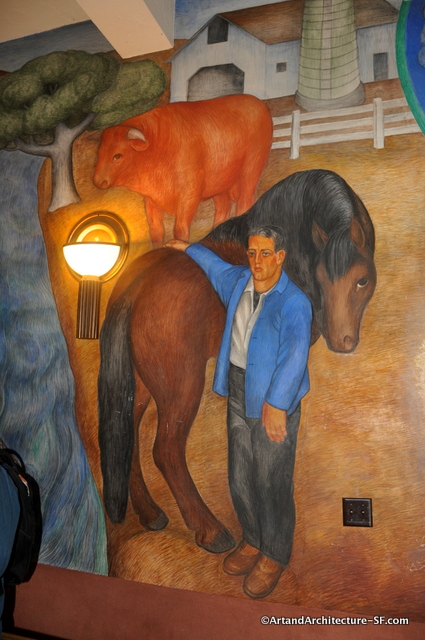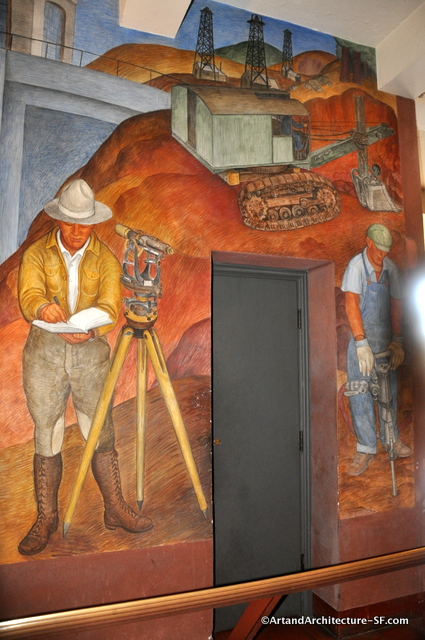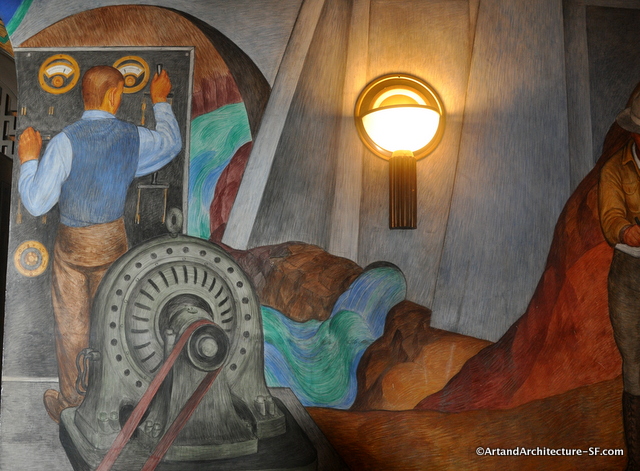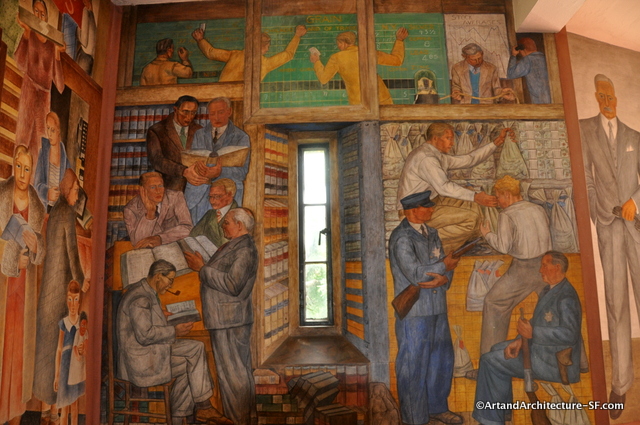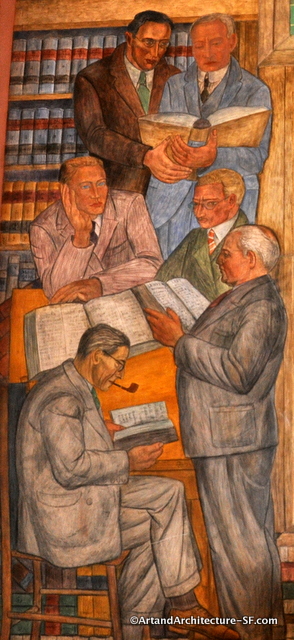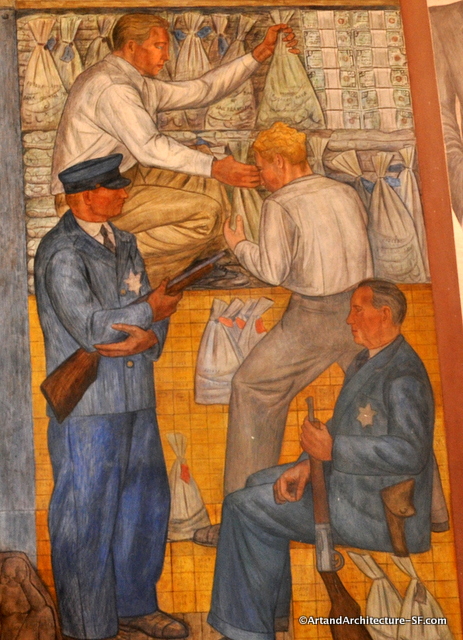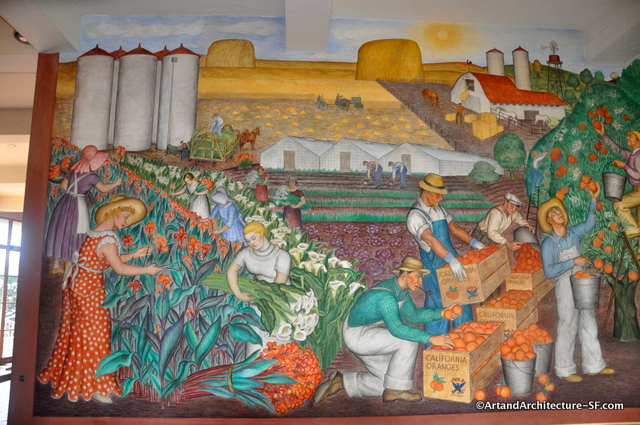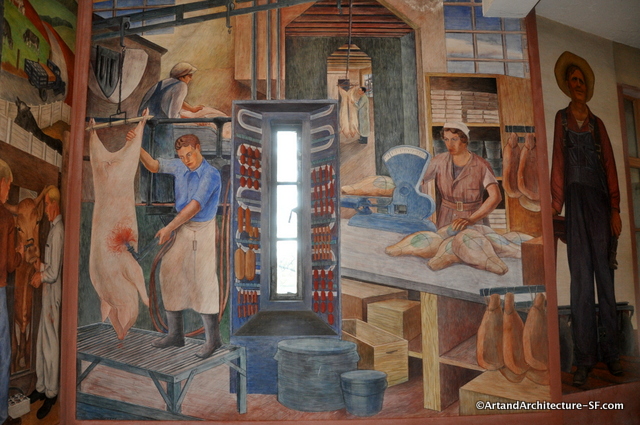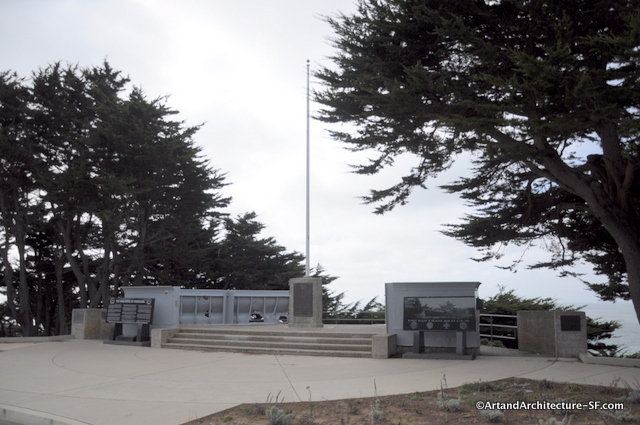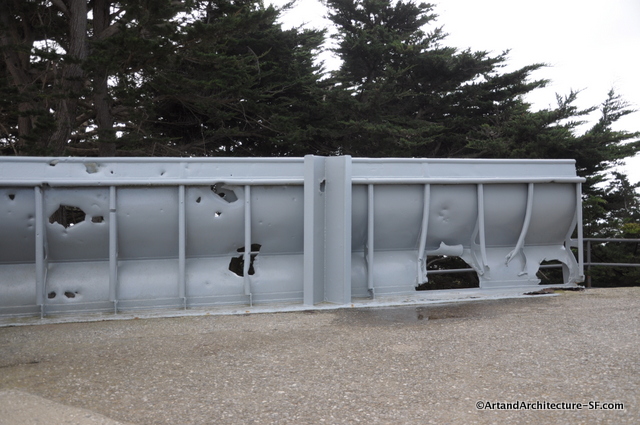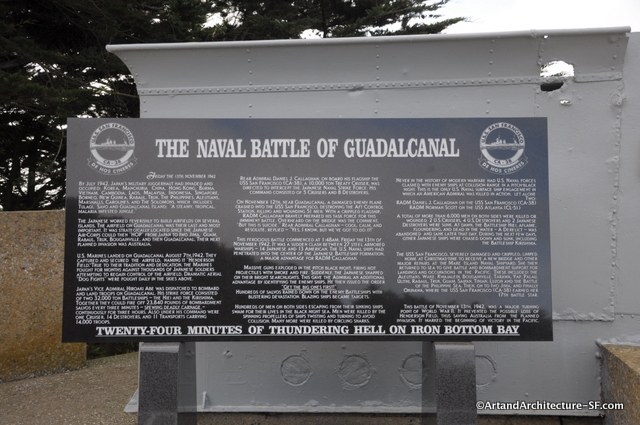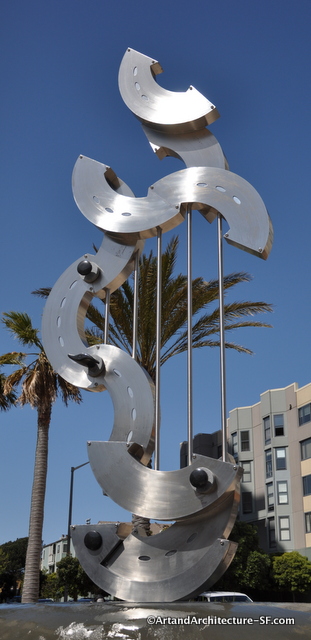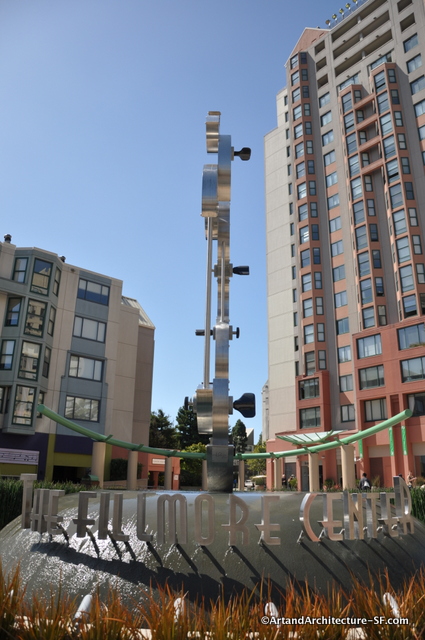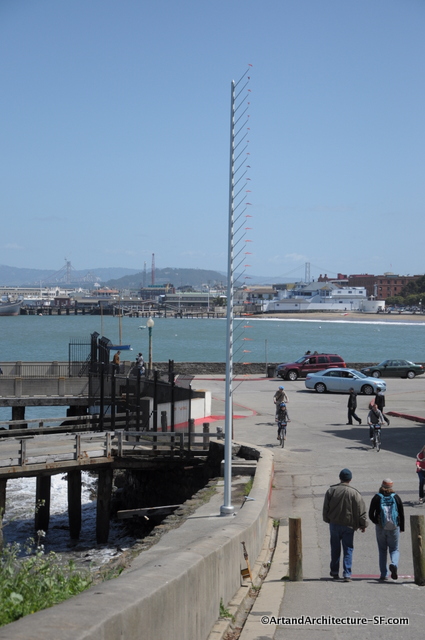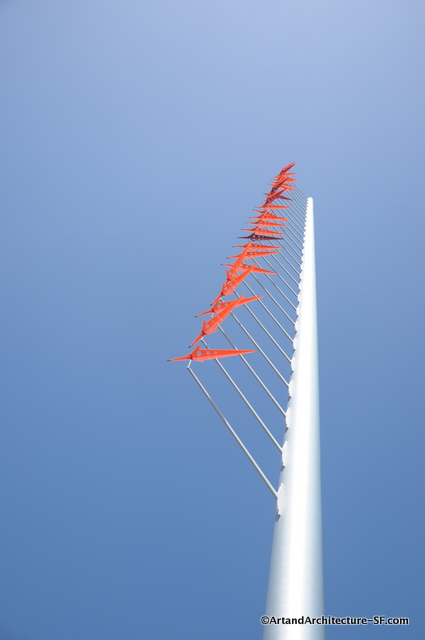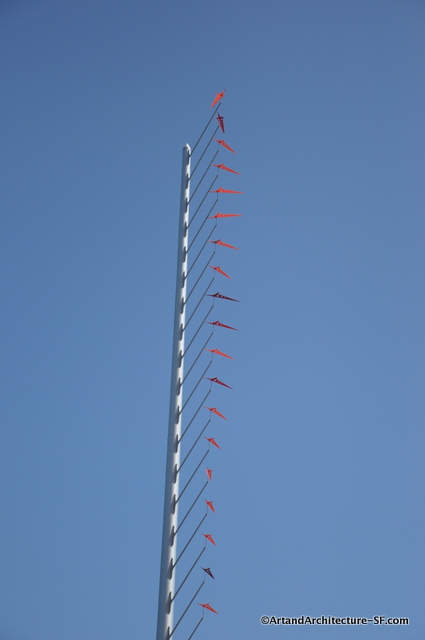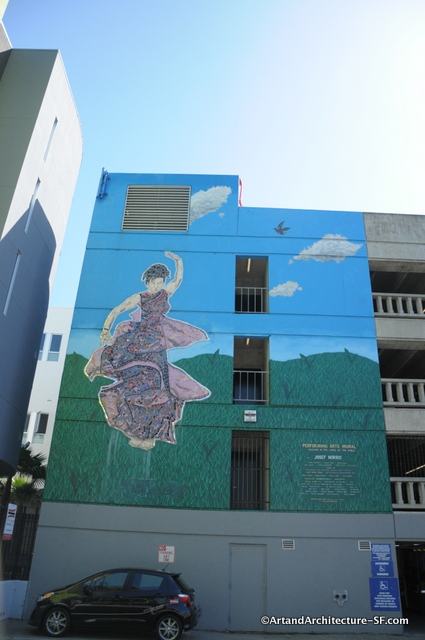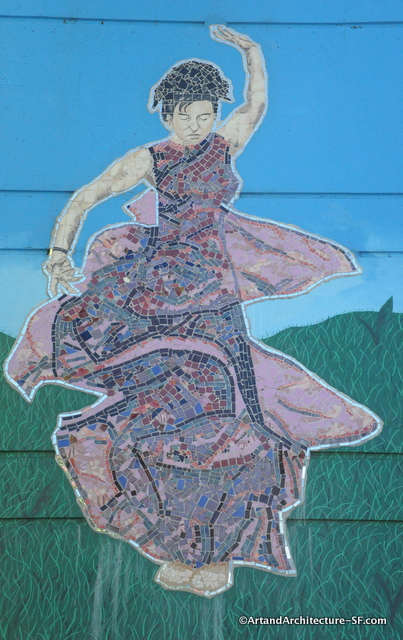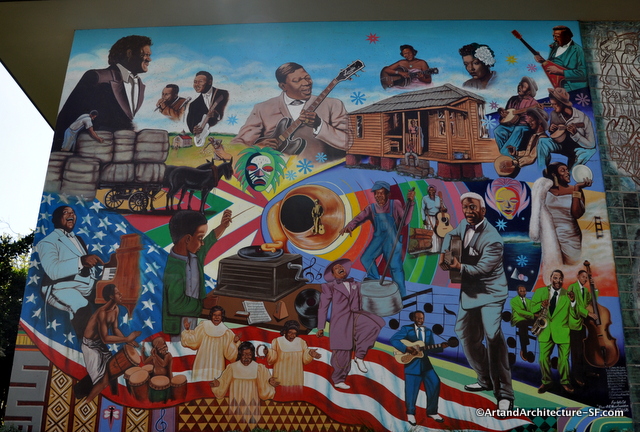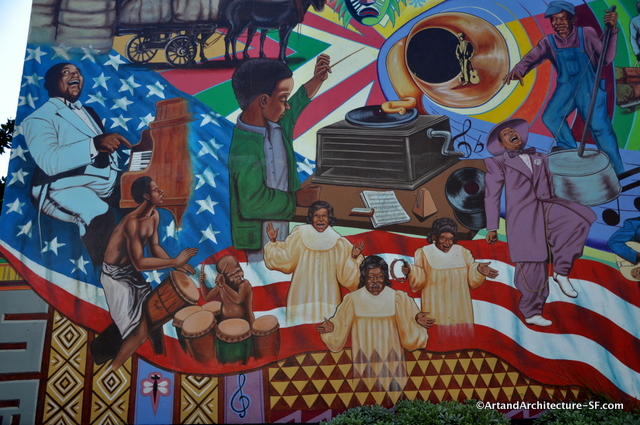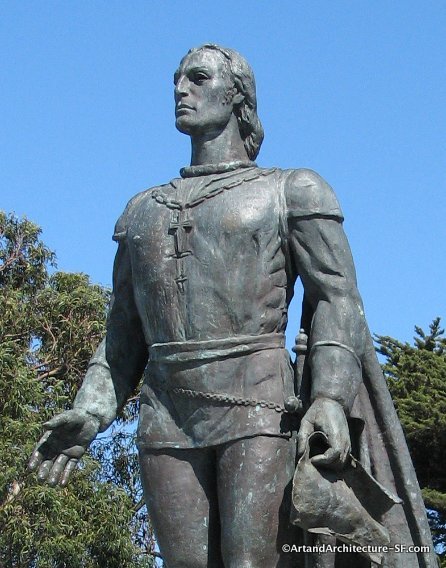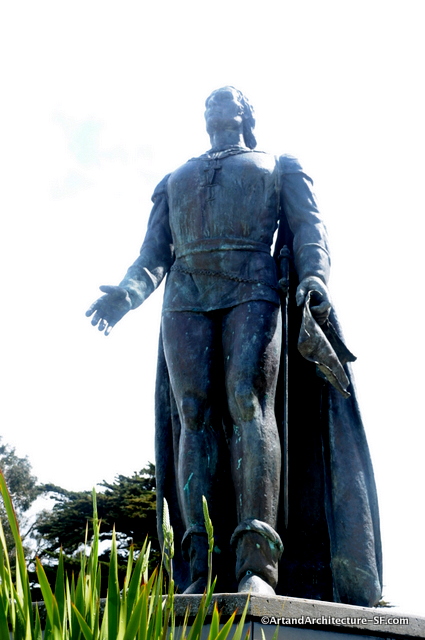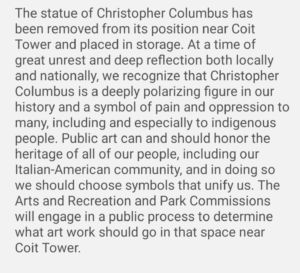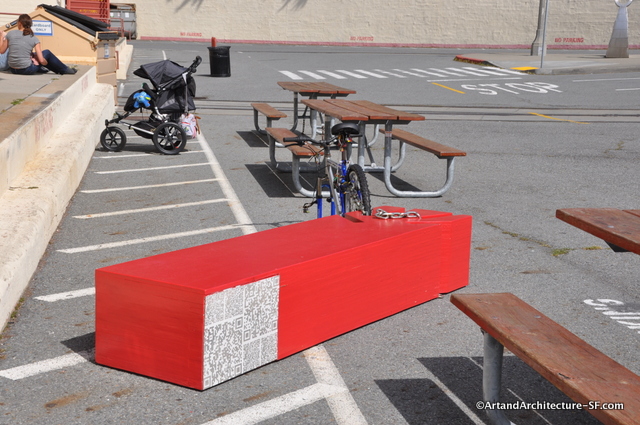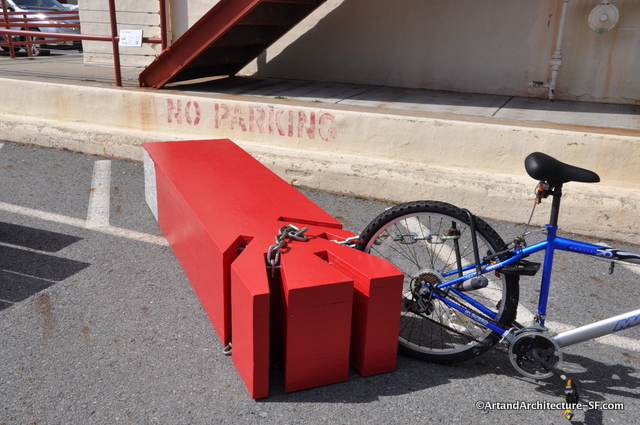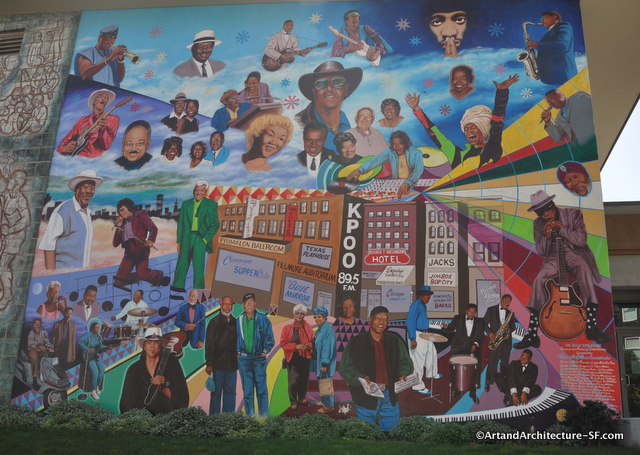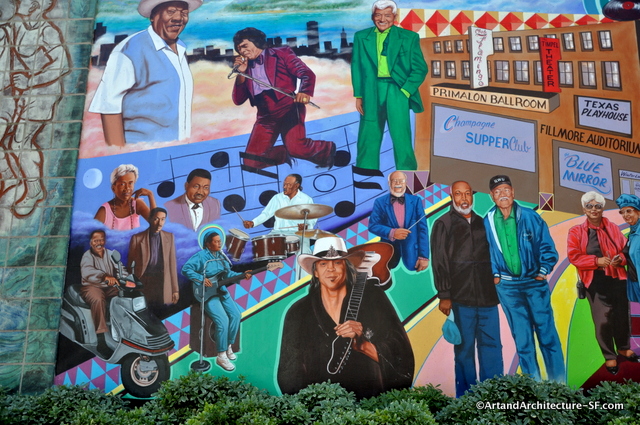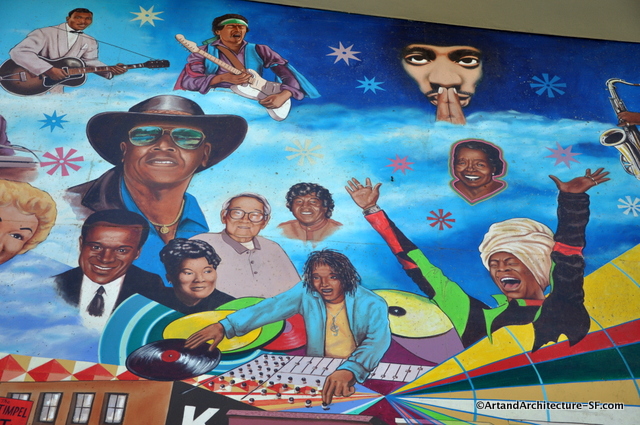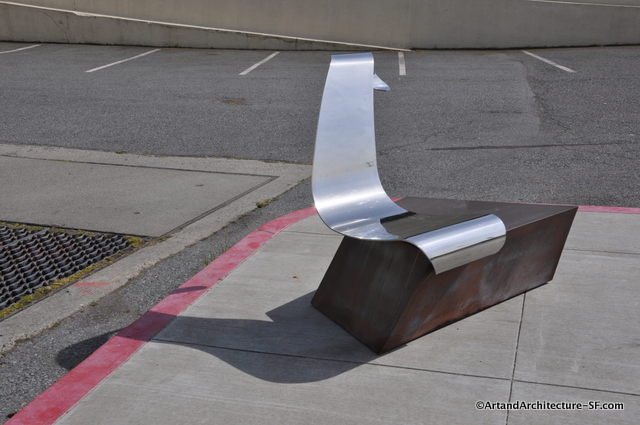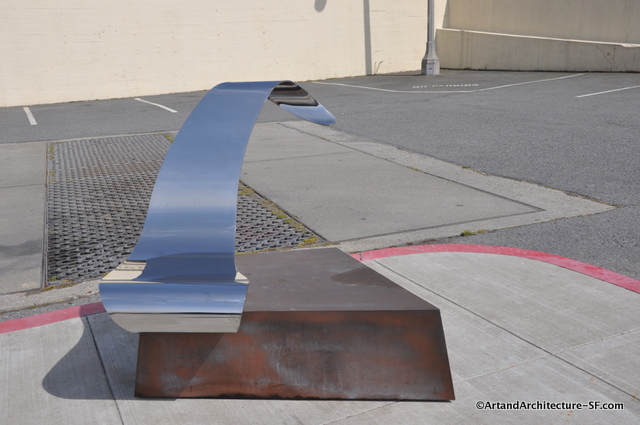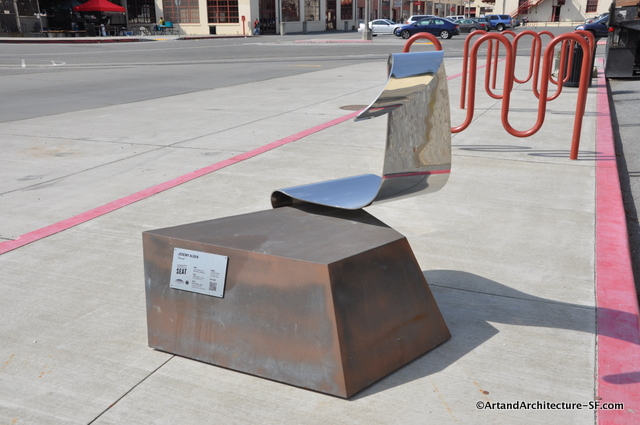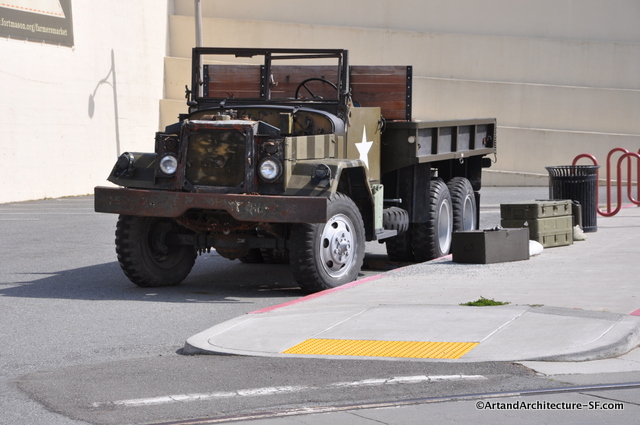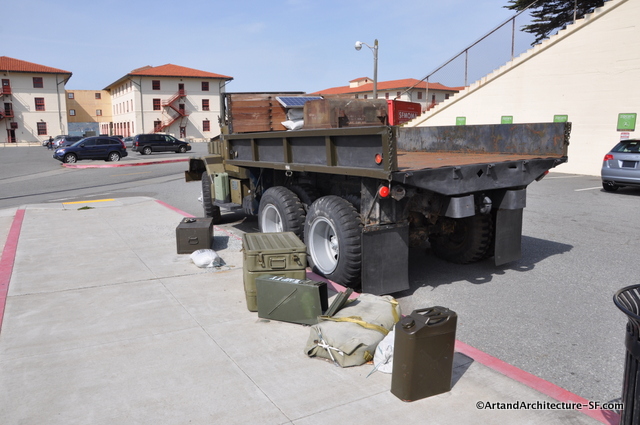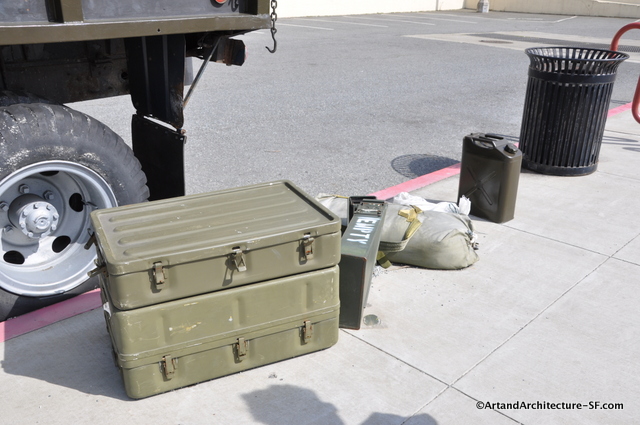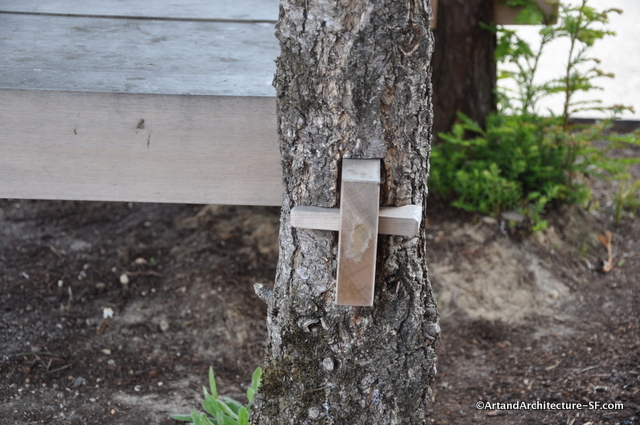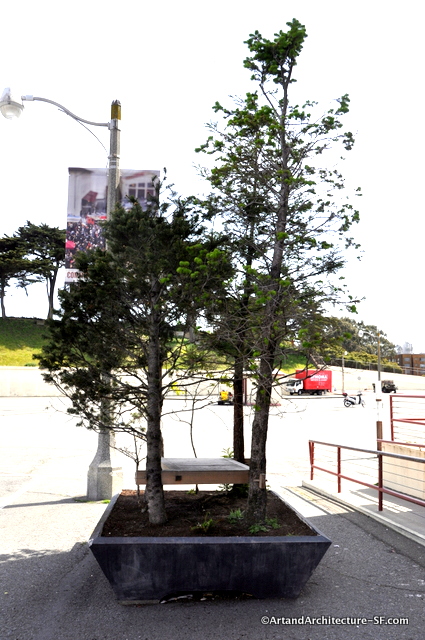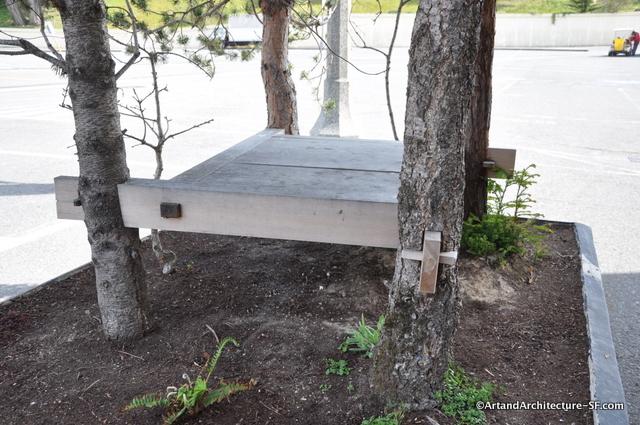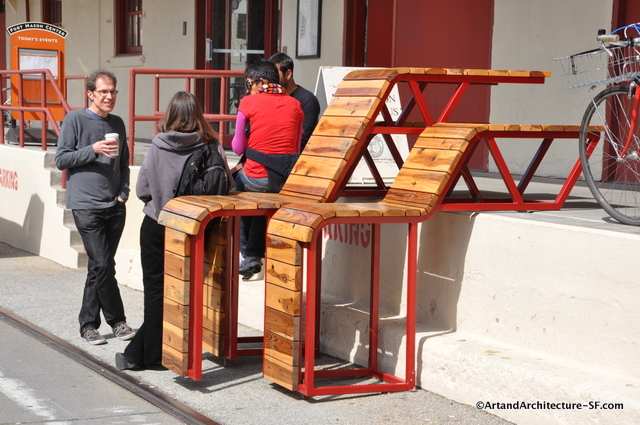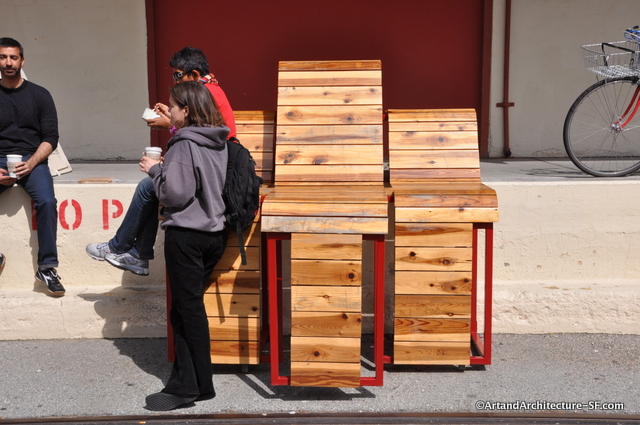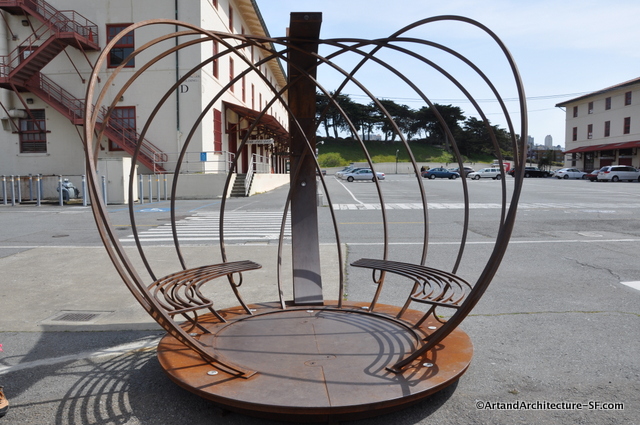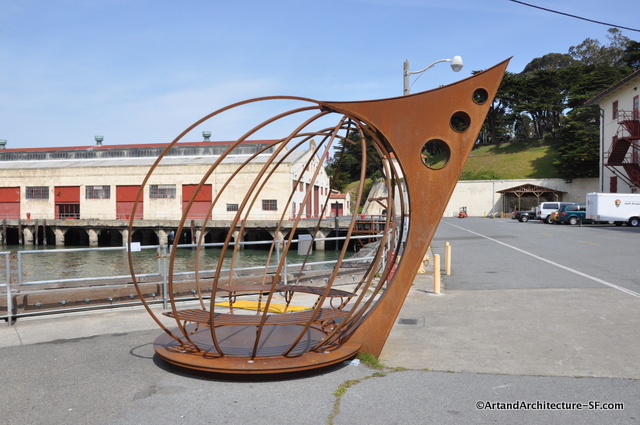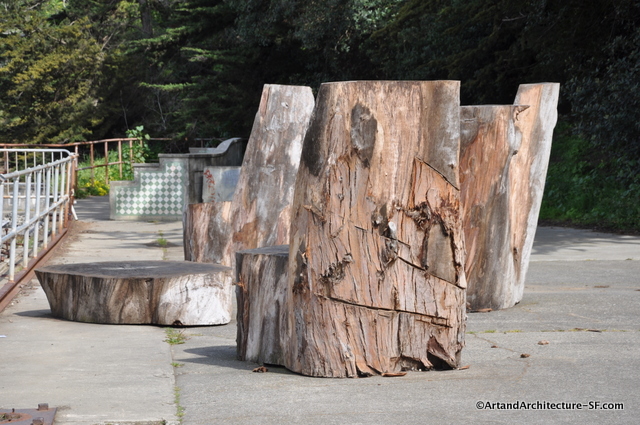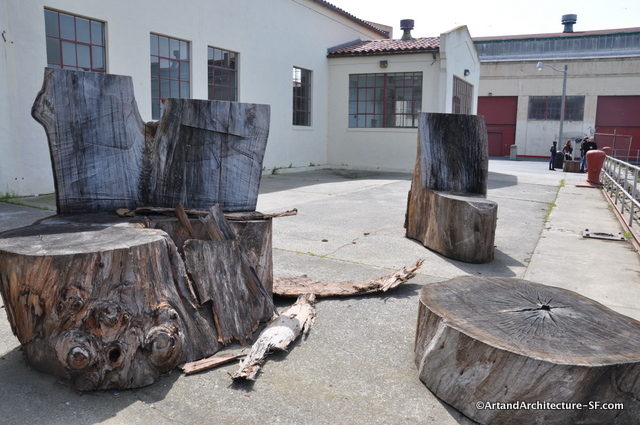Lands End
48th Avenue Parking Lot
In 1942 the cruiser USS San Francisco attacked a vastly superior Japanese force off the coast of Guadalcanal. It was the most brutal close-quarters naval engagement of World War II. The San Francisco took some 45 direct hits and sustained heavy damage while sinking one Japanese ship and seriously damaging two others (including a battleship). One hundred and six sailors, including Rear Admiral Daniel Callaghan, were killed and 131 more wounded. Despite it all, the San Francisco safely made it back to port. This savage battle is commemorated by an unusual memorial in Land’s End. The USS San Francisco Memorial is oriented toward Guadalcanal, and it eschews the usual symbolic folderol in favor of something far more visceral: a shell-ridden section of the San Francisco ‘s bridge. The site of heavygauge steel perforated like paper captures the fury and horror of that night better than any sculpture ever could.
*
*
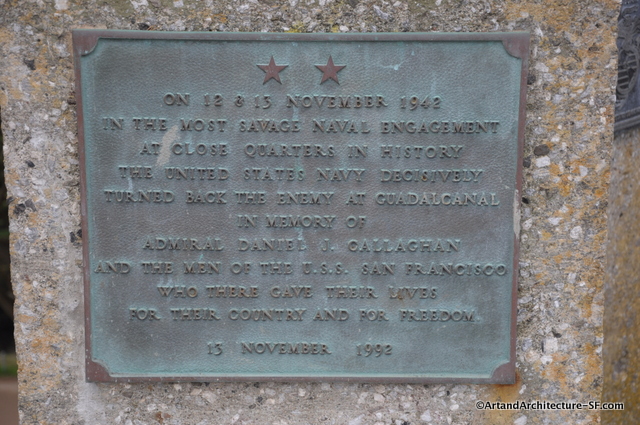
On 12 & 13 November 1942
In the most savage naval engagement
at close quarters in history
The United States Navy decisively
turned back the enemy at Guadalcanal
In memory of
Admiral Daniel J. Callaghan
and the men of the U.S.S. San Francisco
who there gave their lives
for their country and for freedom
13 November 1992
*
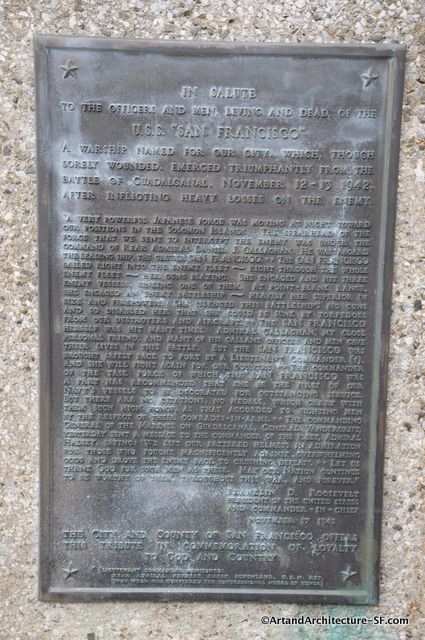
IN SALUTE
TO THE OFFICERS AND MEN LIVING AND DEAD ON THE
U.S.S. “SAN FRANCISCO”
A WARSHIP NAMED FOR THE CITY, WHICH, THOUGH SORELY WOUNDED, EMERGED TRIUMPHANTLY FROM THE BATTLE OF GUADALCANAL, NOVEMBER 12-13 1942,AFTER INFLICTING HEAVY LOSSES ON THE ENEMY.
“A very powerful Japanese force was moving at night toward our positions in the Solomon Islands. The spearhead of the force that we sent to intercept the enemy was under the command of Rear Admiral Daniel J. Callaghan. He was aboard the leading ship, the cruiser SAN FRANCISCO + + The San Francisco sailed right into the enemy fleet— right through the whole enemy fleet—her guns blazing. She engaged and hit three enemy vessels, sinking one of them. At point blank range she engaged an enemy battleship–heavily her superior in size and firepower. She silenced this battleship’s big guns and so disabled her that she could be sunk by torpedoes from our destroyers and aircraft ++ The SAN FRANCISCO herself was hit many times. Admiral Callaghan, my close personal friend, and many of the gallant officers and men gave their lives in this battle. But the SAN FRANCISCO was brought safely back to port by a Lieutenant Commander (*), and she will fight again for our country ++ The Commander of the Task Force of which the SAN FRANCISCO was a part, has recommended that she be the first of our Navy’s vessels to be decorated for outstanding service. But there are no citations, no medals, which carry with them such high honor as that accorded to fighting men by the respect of their Comrades-in-Arms. The Commanding General of the Marines on Guadalcanal, General Vandergrift, yesterday sent a message to the Commander of the Fleet, Admiral Halsey, saying “We lift our battered helmets in admiration for those who fought magnificently against overwhelming odds and drove the enemy back to crushing defeat”++ Let us thank God for such men as these. May our Nation continue to be worthy of them, throughout this war, and Forever.
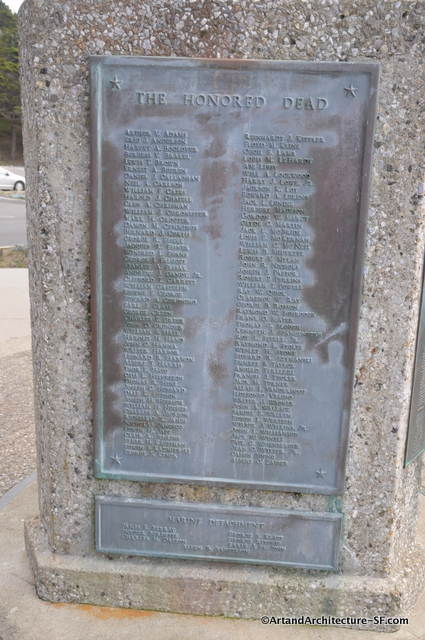
The Honored Dead
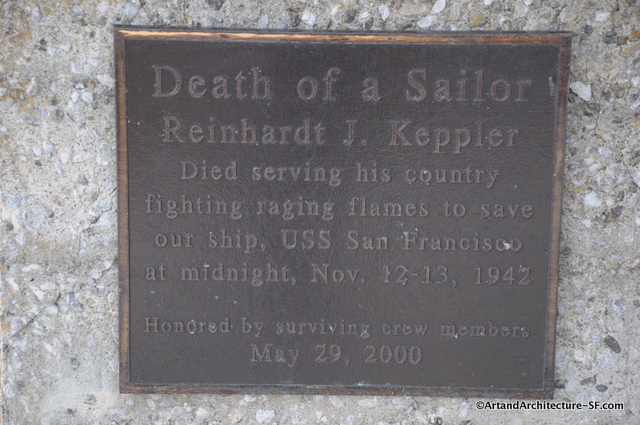
Death of a Sailor
Reinhardt J. Keppler
Died serving his country
fighting raging flames to save
ourship, USS San Francisco
at midnight, Nov. 12,13, 1942
Honored by surviving crew members
May 29, 2000
The children of many of the men on the
USS San Francisco have commemorated the men and their deeds on a
website. It covers the history of the ship, as well as the Battle of Guadalcanal. It is well worth the time to go through its many pages.
